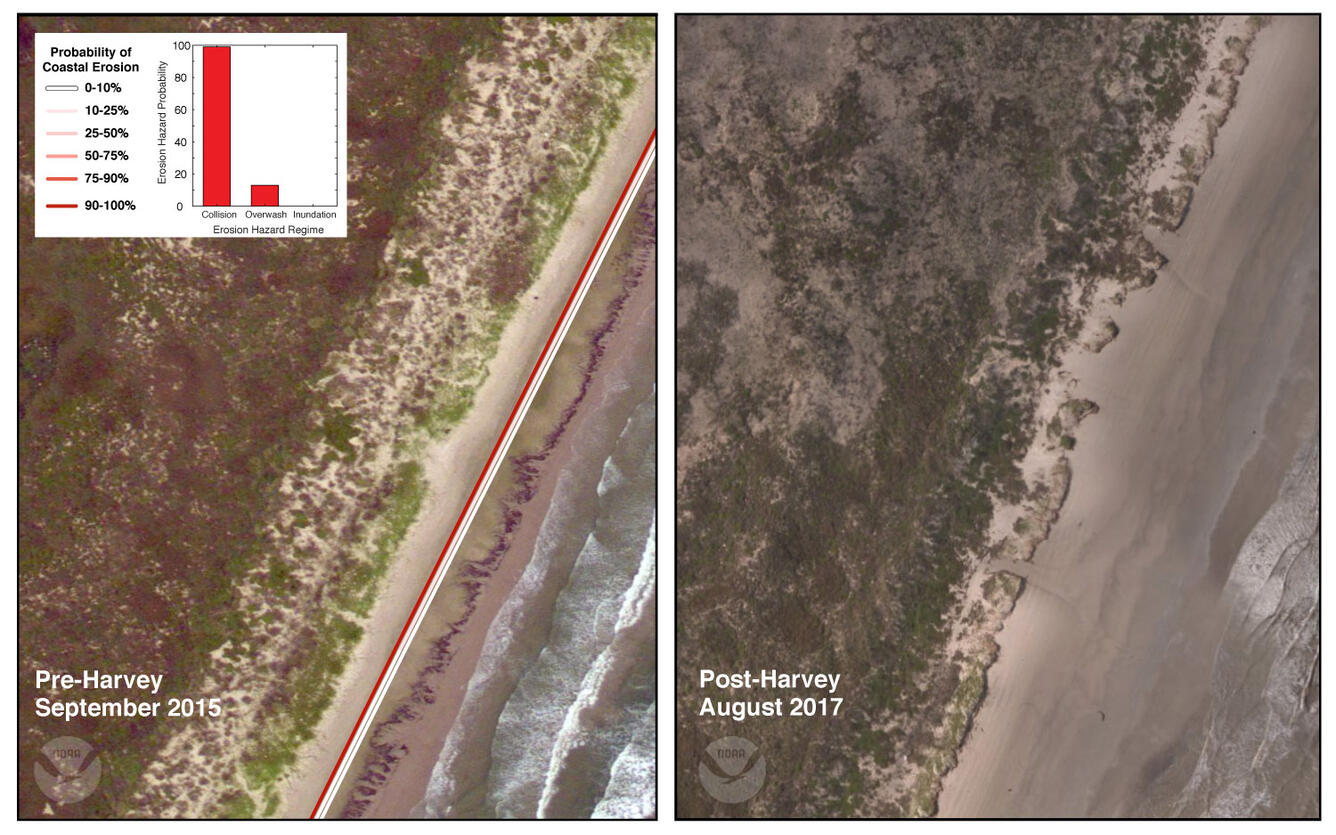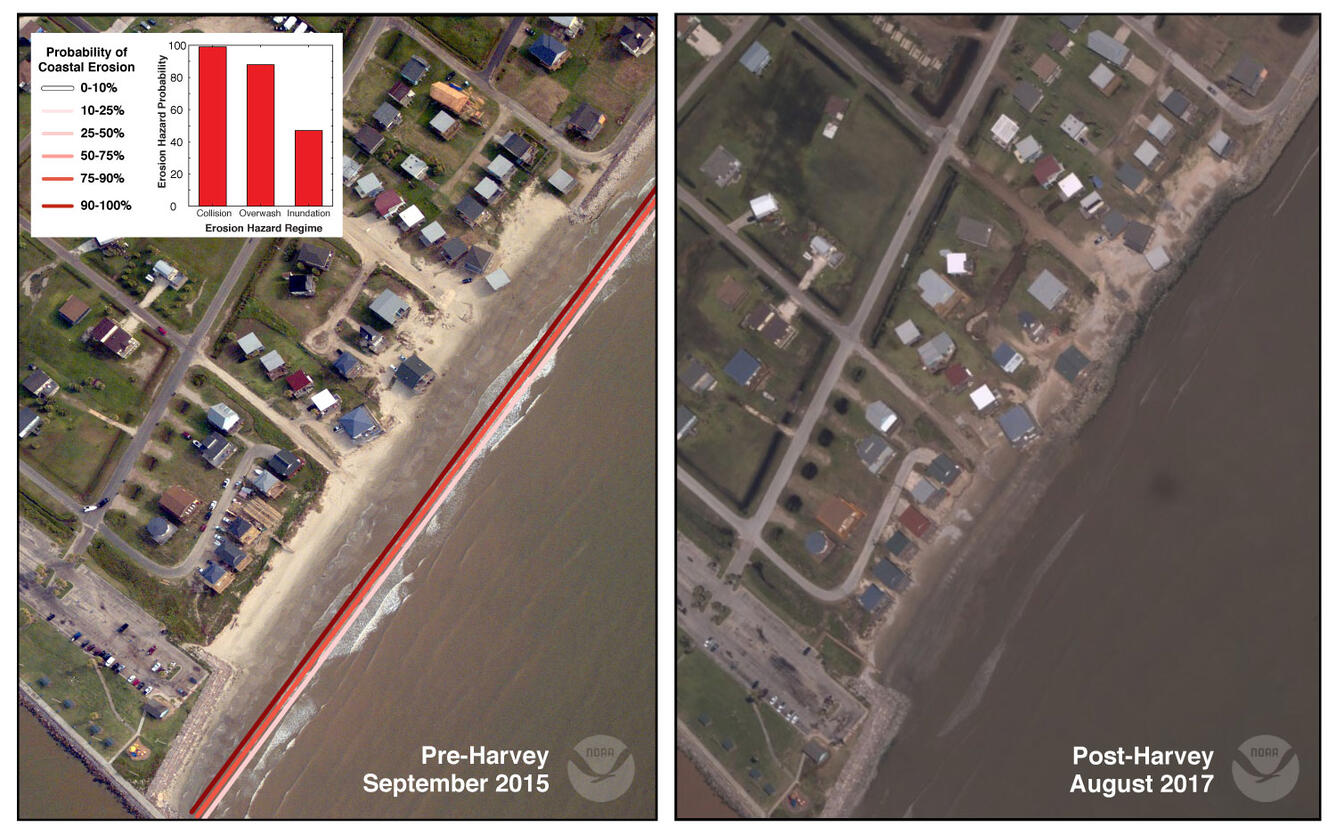Pre- and Post-Storm Photo Comparisons - Texas
Pre- and post-storm photo comparisons using NOAA imagery
The coastal change forecast model predicts the probability of where and how primary sand dunes along the coast will be impacted by water levels during a storm. This includes the combined effect of surge and wave runup. The color band closest to the shoreline is the probability of dune erosion, the middle color band is the probability that sand dunes will be overtopped by waves during the storm and the outer color band is the probability that the sand dunes will be completely inundated/flooded. The model forecast is available on the coastal change hazards portal and more information about the model.
Below is an initial comparison of imagery collected by the National Oceanic and Atmospheric Administration (NOAA) in 2015 with similar imagery taken a few days after Hurricane Harvey's landfall (https://storms.ngs.noaa.gov/). These photos provide information about how the coastal was impacted by the storm and can be used as validation for the model.
Get Our News
These items are in the RSS feed format (Really Simple Syndication) based on categories such as topics, locations, and more. You can install and RSS reader browser extension, software, or use a third-party service to receive immediate news updates depending on the feed that you have added. If you click the feed links below, they may look strange because they are simply XML code. An RSS reader can easily read this code and push out a notification to you when something new is posted to our site.








